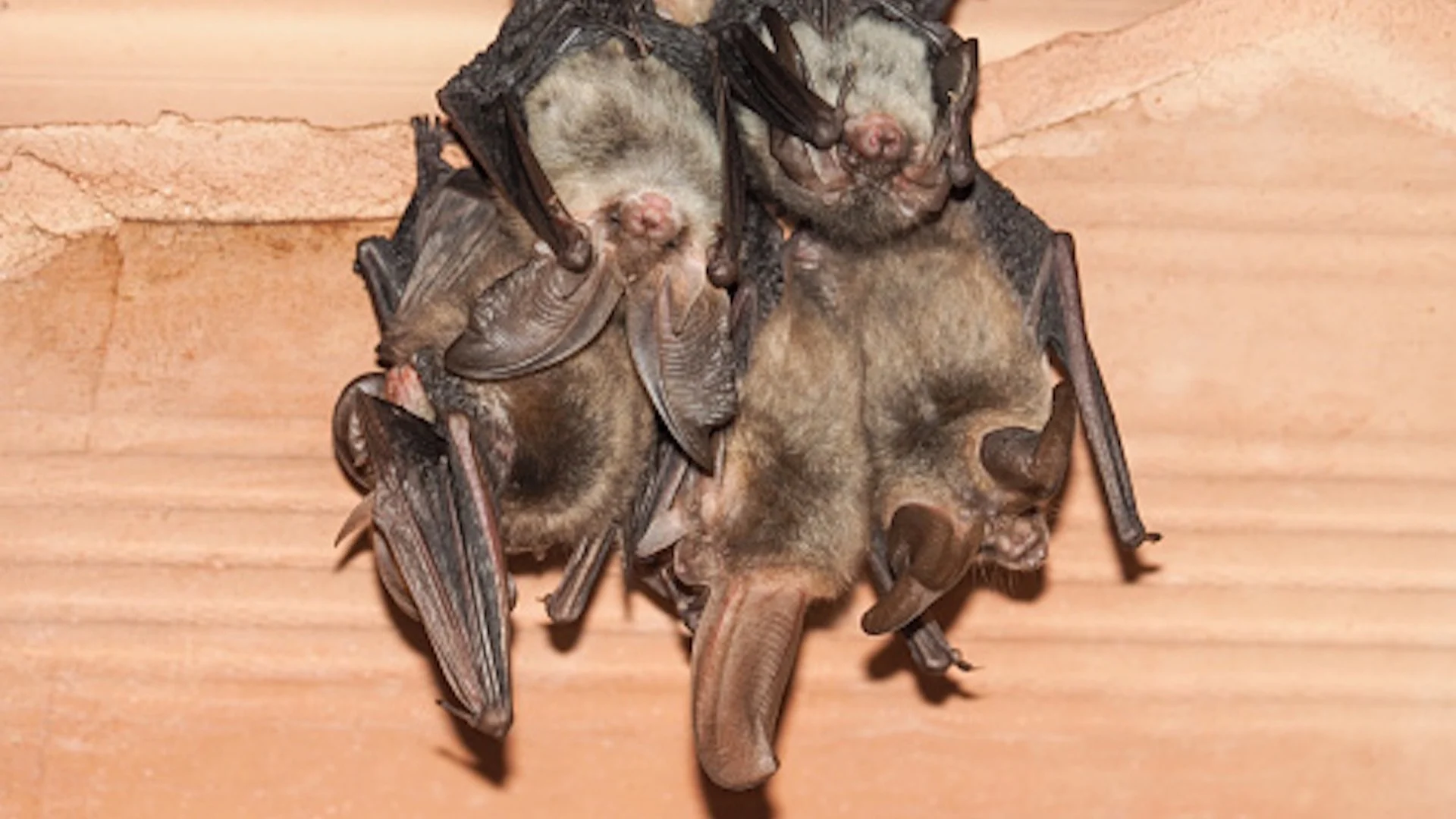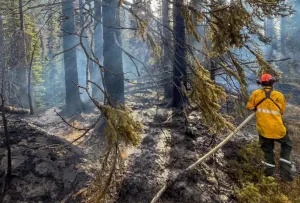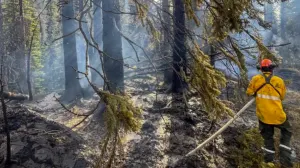
B.C. anticipating fungal disease spread behind deaths of North American bats
Ecologists in different parts of B.C. are bracing for the possible spread of a fungal disease which has eradicated bat populations in multiple parts of North America and has now been detected in the Kootenays.
On Monday, B.C.'s Ministry of Water, Land and Resource Stewardship said it had discovered the fungus that causes white-nose syndrome in bat guano — or bat droppings — in the Grand Forks area of B.C., about three kilometres north of the Canada–U.S. border.
SEE ALSO: Learn about Canada's bats, and how you can support them
They have not yet found bats in the province with the disease, known as white-nose syndrome, but researchers fear what will happen if it starts to spread.
"It would be devastating," said Paula Rodriguez de la Vega, co-ordinator for the B.C. Community Bat Program in the Okanagan region. "Bats are incredibly important."
White-nose syndrome has killed millions of bats across North America since first appearing in North America in New York State, probably through shipping. It's spread mostly bat-to-bat, although humans can play a role by carrying spores on their clothes or gear.

(U.S. Fish and Wildlife Service)
White-nose syndrome does not affect humans, but it starves bats to death by interrupting their hibernation, draining them of the energy needed to get through the winter. The disease spreads quickly because bats huddle together to keep warm.
The province said staff have been testing for the disease in B.C. since the fungus reached the west coast of the United States in 2016.
Bats are important part of the ecosystems: ecologists
Brian Paterson, a wildlife biologist and bat researcher in Dawson Creek in northeastern B.C., says it comes as a "sad surprise" that the fungal disease has finally arrived in B.C. because he doesn't want to see a negative impact on the ecosystem due to bats' death.
"A little brown bat might be able to eat, say, 600 mosquitoes in a night. They also prey on a number of forest pests, including moths, so their contribution to pest control is immeasurable," Paterson told host Carolina de Ryk on CBC's Daybreak North, adding that the species also plays an important role in pollination.
De la Vega adds that bats are also an important source of food for predators such as owls.
"I've actually sat watching bats coming out of their roost [and] doing bat counts, and an owl was perched just beside there hunting the bats and having a feast," Rodriguez de la Vega said on CBC's Daybreak South.

"They're a really important part of the food chain of the ecosystems."
De la Vega said it's important for the public to play a role in tracking bat populations so researchers can have a strong understanding of their health across the province through the Community Bat Program.
According to its website, the Community Bat Program is a network of community bat projects across the province that are carried out in partnership with the Ministry of Environment to monitor the bat populations and protect bat roost sites.
In light of the risks around white-nose syndrome, the program has been asking British Columbians to report a dead or sick bat on its website or via email at info@bcbats.ca or call 1-855-922-2287.
During the white-nose syndrome period from Nov. 1 to May 31, the program recommends people not touch a dead bat with bare hands but instead collect it by wrapping it with a paper towel and putting it into a zip lock bag,
The program also recommends refrigerating or freezing the specimen if it takes more than 48 hours for a program co-ordinator to pick it up.
WATCH: Climate change has been linked to a disgusting side of this species
Thumbnail courtesy of Getty Images.
The story was originally published for CBC News. It contains files from The Canadian Press, Daybreak North and Daybreak South.









